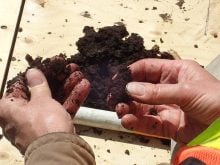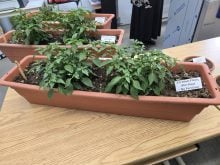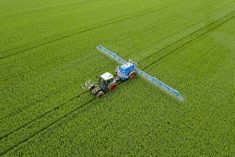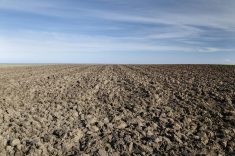The best place to store water is where it falls.
That’s the conclusion of four Manitoba conservation districts that are banding together to launch a new project that will demonstrate how to build organic matter in soil and make it a sink for rainfall and meltwater.
“Our surface water management strategy has been built on small water storage and there are all kinds of issues with that, beavers, dams blowing out, limited sites and the requirement for licences,” said Ryan Canart, district manger of the Upper Assiniboine River Conservation District (UARCD). “If we moved towards establishing practices that store water in our soil, the flooding becomes less of an issue, beavers are not an issue and there is the added benefit of capturing carbon.”
Read Also
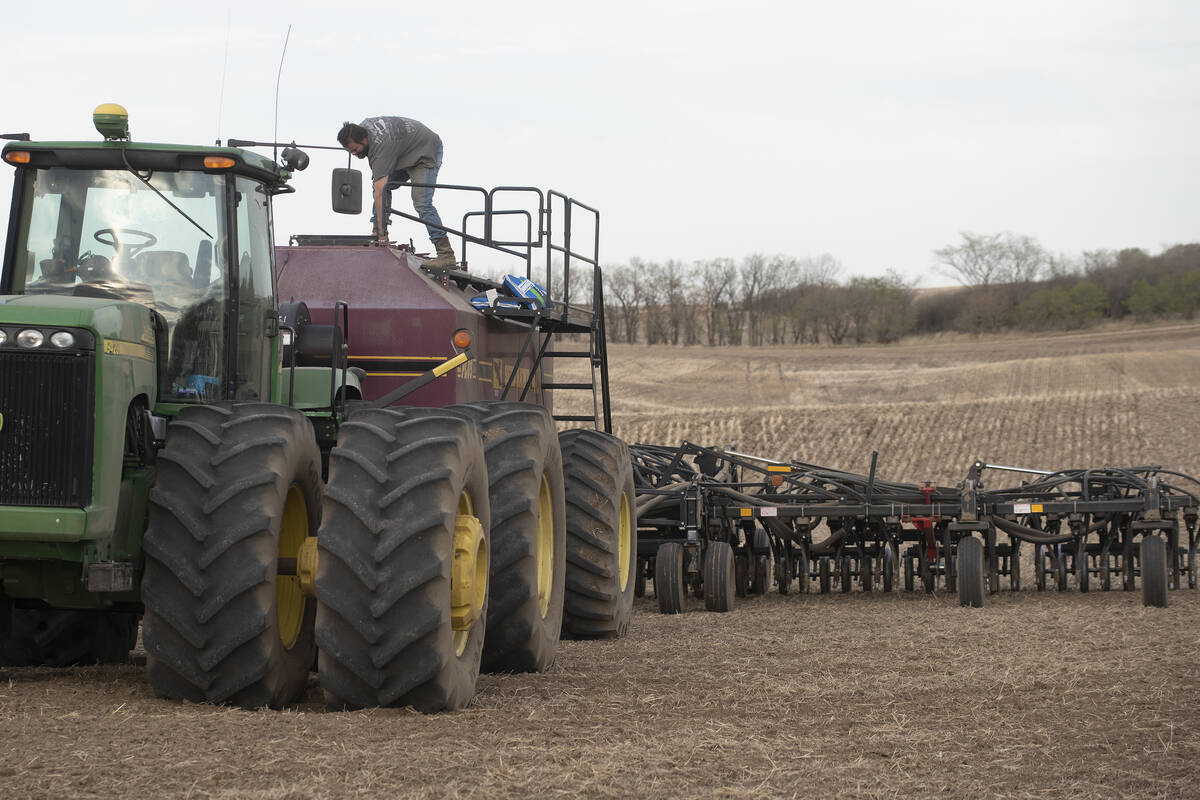
Nutrien pays farmers for efficient nitrogen
Nutrien’s Sustainable Nitrogen Outcomes (SNO) program pays Prairie farmers to limit nitrogen loss and, therefore, fertilizer-related greenhouse gas emissions.
The UARCD has partnered with the Intermountain Conservation District, the Assiniboine Hills Conservation District and the Kelsey Conservation District to initiate soil health programs. They want to link up with interested producers and establish sustainable agriculture concepts on active farm operations.
“We started last year by converting funds from our previous forage program to a soil health program and found three producers to work with,” said Canart. “Each producer determines the goals they want to work towards, but typically, if you are trying to build soil or build carbon, you are looking at growing some kind of cover crop with a lot of vegetation and then try to return that vegetation back into the soil.”
Canart says the program will establish a few of these concepts on local farms, under local conditions, in order to demonstrate the practices and broaden knowledge of them.
“We really want to initiate these concepts in our own backyard and demonstrate the benefits, so that we can show how these concepts are viable on our land and in our soil.”
Sponge-like soil
Years of conventional agriculture practices have degraded the soil throughout North America, causing it to become dry and compact, crippling its natural ability to respond to stress and exacerbating the negative impacts of weather events.
Heavily tilled soils have virtually no active root systems and become hard and compact as much as 12 inches below the surface.

When heavy rainfalls occur on these soils, water is not being absorbed where it lands, causing run-off and flooding.
“People are often frustrated by flooding situations but I don’t think a lot of people realize how unaccepting our soils are of water,” Canart said. “We need to create a better situation where our soils can accept water and store it.”
Sustainable agriculture practices, such as reducing soil disturbance, armouring the soil surface and focusing on building organic matter within the soil, enable the land to better act as a reservoir, holding moisture during times of drought and acting as a sponge in times of flooding.
Producers who are actively increasing organic matter have reported fewer areas of pooling in their fields and faster water infiltration, allowing them to get back on their land faster following rains.
In times of drought they have reported fewer dry spots and less soil moisture lost through evaporation.
Tripling infiltration
Following more than two decades of no-till practices and use of cover crops to improve the organic content of his soil, North Dakota farmer, Gabe Brown, says his land can hold roughly three times more water than it used to.
“In talking with some local farmers, they were discussing that there has been flooding here and I was wondering if that was because they let more water out of the dam or is it really because there is an infiltration problem in the soil,” said Brown.
“It’s not about how much water you get. It’s about how much you can store. Soil with higher levels of organic matter and carbon are able to absorb more water, hold the moisture better, have a stronger root system, and enable forage to better withstand bouts of drought or flooding.”
Brown says when he bought his farmland, located just outside of Bismarck, in 1991 the organic levels in the soil on his cropland were 1.7 to 1.9 and that land was infiltrating half an inch of water per hour.
“Now that land averages about six per cent organic matter and I can infiltrate two inches of rainfall in 25 seconds,” said Brown. “It is not how much rain you get, it is how much rain you can infiltrate, store in the soil and have the organic matter move that water within the soil profile.”
Brown says the growth of the organic matter in his soil has also benefited in times of drought as the soil retains moisture better and can better withstand extremes in temperature.
“I no longer worry about a one- or two-year drought. It is not going to affect my operation whatsoever. You build resiliency by focusing on healthy soil,” Brown said. “That allows you to withstand these differences in temperature and precipitation.”
Brown added keeping the ground covered is also important, keeping moisture in, better regulating temperature and continually feeding the soil biology.
“Bare ground during hot days will dry out so quickly, bugs die, evaporation happens and all of that soil moisture is gone,” Brown said.
Learn from others
Canart says the work Brown has done on his operation is a good example of what he hopes to establish in Manitoba and he has been in contact with the Burleigh County Soil Conservation District based out of Bismarck, that works closely with Brown, to help develop the model for local projects.
The four conservation districts have applied for funding through the Growing Forward 2 initiative and are currently awaiting a response.
Canart says he hopes the government will see value in the proposed program and in the future he would like to see incentives around capturing carbon on farmland established.
“We have the potential to store tons and tons of carbon in our soils, which will greatly increase water retention. We need to promote and incentivize producers to build carbon in their soils. If we can do that, there are huge benefits for everyone involved,” Canart said.





